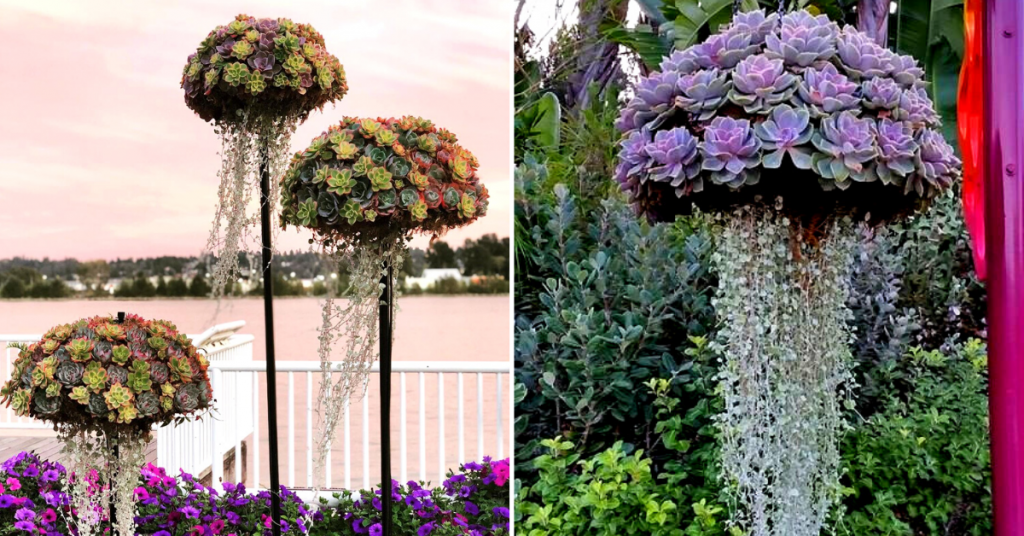Blog
Turn Your Garden Into an Aquarium With Jellyfish Succulent Hanging Planters
Bring the beauty of jellyfish to your garden!

(TMU) — If you’ve never heard of jellyfish succulents, that’s because there are no real jellyfish succulents! Except, of course, for those created by planting selected succulents in hanging containers for gardens, patios, or a sunny spot indoors.
While some people seem able to resurrect plants regardless of the poor state they may be in, others have a fear of keeping plants lest they kill them. For those in the latter category succulents are the answer. They are beautiful and they come in many shapes, colors, and sizes.
And to top it all, succulents don’t need much attention. However, they do need planting in a coarse, well-drained soil mixture, and strong light or full sun for part of the day. Once planted they don’t need much more than water and are very forgiving should you forget about them for a couple of days.
You can make your own jellyfish hanging planters using just two types of succulents. The most daunting task of all could be choosing the plants for your jellyfish creation once you’re at the garden center—there’s so much choice and they are all unique and beautiful.
What you’ll need:
- A lined hanging basket.
- Soil.
- Two types of succulent plants, one for the top of the basket to create the jellyfish, and another for the tentacles.
Putting it together:
- Fill the basket with soil nearly to the top then plant five or six of the hanging succulents near the rim on the outside of the planter. Sedum morganianum, or Donkey’s Tail, was used for the jellyfish “tentacles.” It is best grown in full sunlight and needs moderate watering.
- Plant five to six of your chosen flowering succulents inside the hanging planter. Leave enough space between the plants to allow each plant to grow and create the “bulbous” jellyfish look. Echeveria, or Hen and Chicks, is a large rose shaped succulent with fat fleshy leaves, available in several varieties and colors. It is a hardy drought resistant plant that needs regular deep watering.
Hang your planter in a sunny south facing spot if you’re in the northern hemisphere or north facing if you’re in the southern hemisphere. You’ll notice blossoming at the top and lengthening of the tail after a few weeks.
Succulents grow in the most extreme environments on our planet like in in dry, low-nutrient soil and well-draining soil. For best results, whether planting your succulents in containers of directly in the garden, you’ll need a “desert dweller” mix. Combine half potting soil with an inorganic product such as perlite which will provide a soil most succulents will thrive in as it mimics their natural habitat.
In nature these plants, depending on the season, may have very heavy rains in a short period and at other times little or no rain and survive on moisture in the air.
Bear that in mind when watering, an occasional soak until water drains out the bottom of the container will be beneficial. Other than that light watering twice a month should suffice. In other words, the soil should always be dry when watering.
By Jade Small | Creative Commons | TheMindUnleashed.com
Typos, corrections and/or news tips? Email us at Contact@TheMindUnleashed.com
